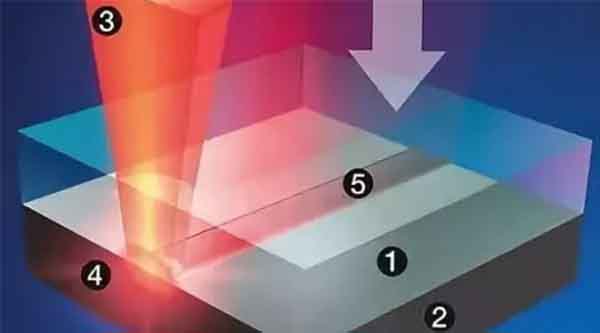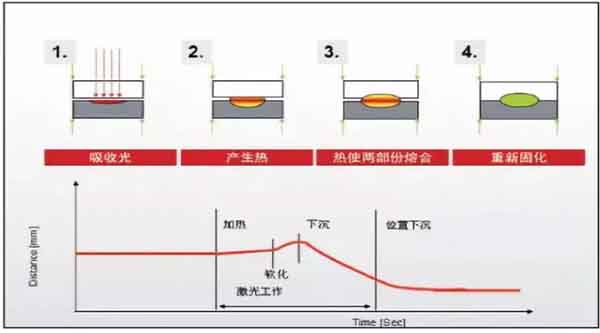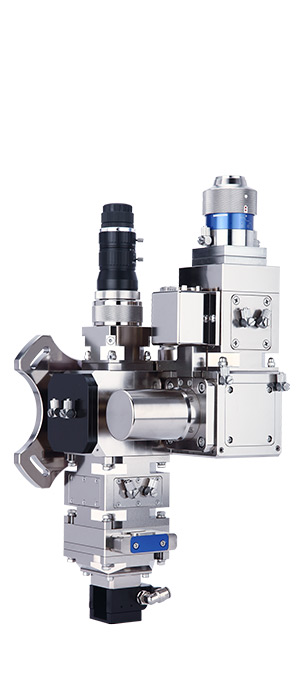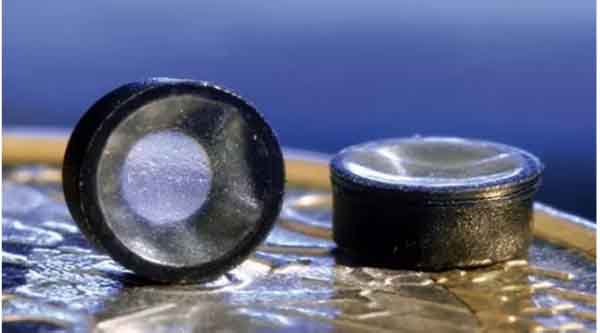Application of laser welding head in medical equipment
Laser head welding is widely used in various fields of medical devices due to its advantages of local heating, precision machining and non-contact heating.
Compared with other commonly used welding techniques, laser head welding technology produces almost no welding slag and debris, and no adhesive is added during the welding process, so the entire welding work can be completed in a clean room. Laser head welding technology has greatly promoted the development of medical devices, such as the shell packaging of active implantable medical devices, radiopaque markers of cardiac stents, ear wax protectors, balloon catheters, etc., which are inseparable from the use of laser welding.
1. Principle of plastic laser head welding
Laser head welding is a welding method that uses a high energy density laser beam as a heat source. In other words, the laser head radiates and heats the surface of the workpiece, and the surface heat diffuses into the workpiece through thermal conduction, melting the workpiece and forming a specific molten pool. As shown in the image below, the laser beam passes through the upper transparent material and is then absorbed by the lower material. After the laser energy is absorbed, it is converted into heat energy. When the two materials are pressed together, thermal energy is conducted from the absorbing layer to the transparent layer, melting and bonding the two materials.


At the same time, the internal pressure is generated due to the thermal expansion and expansion of the material itself, and the combined action of the internal pressure and the external pressure ensures the strong welding of the two parts. The above two figures intuitively illustrate the welding principle and process of the plastic laser welding head.
It can be seen that the beam energy of the laser head must be absorbed by the plastic to achieve a good welding effect, so the welding of the plastic laser welding head generally uses a semiconductor laser. Also, not all plastics can be welded with a laser head. Plastics can be divided into thermoset and thermoplastic. Thermosets do not have repeatable formability and cannot be welded. Thermosets melt after reheating (i.e. they can be reversibly changed using heating and cooling), a so-called physical change, and therefore weldability.
2. Plastic laser welding process
1. Wavelength laser
Diode lasers or semiconductor lasers are commonly used in plastic welding processes. The beam is located in the near-infrared region with a wavelength of 400~1,100 μm and can be transmitted through an optical fiber. Laser beams in this range are absorbed by most plastics. Diode laser welding systems are compact and the lasers can reach higher power levels. Laser wavelength can be designed according to special requirements. The wavelength of the semiconductor laser is 808~980μm. Semiconductor lasers have the advantages of low investment cost, small size and high efficiency.
2. Plastic material
Thermoplastics include amorphous plastics and semi-crystalline plastics. Plastics that can be laser welded are all thermoplastics. In theory, all thermoplastics can be laser welded.
The requirements of plastic laser welding technology for welding plastics are as follows: materials in the heat-affected zone need good laser absorption; materials that do not belong to the heat-affected zone need good light wave transmission, especially when welding two thin plastic parts. Typically, this can be achieved by adding absorbents to the plastic in the heat affected zone.
3. Water absorption
The application of absorbers is a very important process in plastic laser welding. The essence of plastic laser welding is to melt the plastic to be welded in the heat-affected zone and then cool it down to naturally join the plastic parts. Melting plastic requires plastic parts to absorb enough laser energy.
Generally speaking, the ideal absorber is carbon black, which can absorb almost all infrared wavelengths of laser energy, thus greatly improving the heat absorption effect of plastics, melting the material in the heat affected zone faster, and achieving better results. Some other color dyes can also have the same effect of absorbing light waves.
There are three ways to add absorbent
First, the absorber penetrates directly into the material to be welded, so the plastic parts infiltrated with the absorber should be placed below, and the plastic parts not penetrated by the absorber should be placed above to allow the laser waves to pass through.
The second is to penetrate the absorbent into the surface of the plastic part to be welded, so that only a part of the plastic permeated with the absorbent will become the heat affected zone and be melted.
Third, spray or print absorbent at the contact of the two plastic parts to be welded.
4. Other parameters
Unlike metal welding, plastic laser head welding does not require as much laser head power. The higher the power of the welding laser head, the larger and deeper the area of heat action on the plastic part, which will cause the material to overheat, deform or even damage. The laser head power should be selected according to the desired melting depth.
The welding speed of plastic laser welding heads is relatively fast. Generally speaking, the welding speed of 1mm thick weld can reach 20m/min. However, high power CO2 lasers can be used to weld plastic films at a maximum speed of 750m/min.

3. Application in medical devices
With the wide application of plastic materials in the field of medical devices, new plastic production and processing technologies have emerged one after another, and laser welding, as one of them, has attracted widespread attention due to its advantages of non-polluting, non-contact and seamless connection.
Hearing aids are becoming smaller and smaller, thereby providing users with smaller, more comfortable and invisible hearing aids. A typical ITE hearing aid today is only the size of the tip of a little finger. However, all hearing aids face a big problem: earwax (also known as earwax) produced in the ear canal can contaminate the sound output area. To ensure that a hearing aid can perform its reliable function, protection must be provided at its sound output location.













